Uncategorized
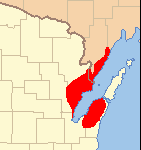 I think most people have heard of the Great Chicago Fire of 1871, but few have heard of the Great Peshtigo Fire of 1871, that started the same day, October 8, 1871. I’m sure that Chicago, being a much bigger city, made it a fire that stuck in the minds of the people, but in reality, the Great Peshtigo Fire was far more deadly. The Chicago fire burned an area about four miles long and almost a mile wide through the Windy City, including its business district. The fire destroyed thousands of buildings, killed an estimated 300 people and caused an estimated $200 million in damages. That is a horrible fire, and a horrible loss of life and property, but it truly pales in comparison to the Great Peshtigo Fire. The Great Peshtigo Fire took place in the area around Peshtigo, Wisconsin and the death toll was estimated at around 1,500 people, and possibly as many as 2,500. I suppose that it seems odd for the estimate to be a difference of as many as a thousand people, but when the fire was finally out, twelve communities were destroyed. An accurate death toll has never been determined because local records were destroyed in the fire. Between 1,500 and 2,500 people are thought to have lost their lives. The 1873 Report to the Wisconsin Legislature listed 1,182 names of deceased or missing residents. In 1870, the Town of Peshtigo had 1,749 residents. More than 350 bodies were buried in a mass grave, primarily because so many had died that no one remained alive who could identify many of them. In the end, over, 1,875 square miles, or 1.2 million acres of forest had been consumed, an area approximately twice the size of Rhode Island. Some sources list 1.5 million acres burned.
I think most people have heard of the Great Chicago Fire of 1871, but few have heard of the Great Peshtigo Fire of 1871, that started the same day, October 8, 1871. I’m sure that Chicago, being a much bigger city, made it a fire that stuck in the minds of the people, but in reality, the Great Peshtigo Fire was far more deadly. The Chicago fire burned an area about four miles long and almost a mile wide through the Windy City, including its business district. The fire destroyed thousands of buildings, killed an estimated 300 people and caused an estimated $200 million in damages. That is a horrible fire, and a horrible loss of life and property, but it truly pales in comparison to the Great Peshtigo Fire. The Great Peshtigo Fire took place in the area around Peshtigo, Wisconsin and the death toll was estimated at around 1,500 people, and possibly as many as 2,500. I suppose that it seems odd for the estimate to be a difference of as many as a thousand people, but when the fire was finally out, twelve communities were destroyed. An accurate death toll has never been determined because local records were destroyed in the fire. Between 1,500 and 2,500 people are thought to have lost their lives. The 1873 Report to the Wisconsin Legislature listed 1,182 names of deceased or missing residents. In 1870, the Town of Peshtigo had 1,749 residents. More than 350 bodies were buried in a mass grave, primarily because so many had died that no one remained alive who could identify many of them. In the end, over, 1,875 square miles, or 1.2 million acres of forest had been consumed, an area approximately twice the size of Rhode Island. Some sources list 1.5 million acres burned.
The Peshtigo Fire was a forest fire that took place on October 8, 1871 in and around Peshtigo, Wisconsin. It was a firestorm that caused the most deaths by fire in United States history. A firestorm is a destructive fire which attains such intensity that it creates and sustains its own wind system. It is most commonly a natural phenomenon, created during some of the largest bushfires and wildfires. The biggest problem in 1871 was the 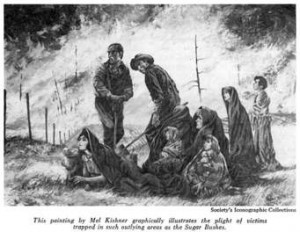 prolonged and widespread drought and high temperatures, capped off by a cyclonic storm in early October. The blaze began at an unknown spot in the dense Wisconsin forest. It first spread to the small village of Sugar Bush, where every resident was killed. There was simply no way of escape for them. High winds then sent the 200 foot flames racing northeast toward the neighboring community of Peshtigo. Temperatures reached 2,000 degrees Fahrenheit, causing trees to explode in the flames. The setting of small fires was a common way to clear forest land for farming and railroad construction. On the day of the Peshtigo Fire, a cold front moved in from the west, bringing strong winds that fanned the fires out of control and escalated them to massive proportions. A firestorm ensued. In the words of Novelist Denise Gess and historian William Lutz, “A firestorm is called nature’s nuclear explosion. Here’s a wall of flame, a mile high, five miles (8 km) wide, traveling 90 to 100 miles per hour (160 km/h), hotter than a crematorium, turning sand into glass.”
prolonged and widespread drought and high temperatures, capped off by a cyclonic storm in early October. The blaze began at an unknown spot in the dense Wisconsin forest. It first spread to the small village of Sugar Bush, where every resident was killed. There was simply no way of escape for them. High winds then sent the 200 foot flames racing northeast toward the neighboring community of Peshtigo. Temperatures reached 2,000 degrees Fahrenheit, causing trees to explode in the flames. The setting of small fires was a common way to clear forest land for farming and railroad construction. On the day of the Peshtigo Fire, a cold front moved in from the west, bringing strong winds that fanned the fires out of control and escalated them to massive proportions. A firestorm ensued. In the words of Novelist Denise Gess and historian William Lutz, “A firestorm is called nature’s nuclear explosion. Here’s a wall of flame, a mile high, five miles (8 km) wide, traveling 90 to 100 miles per hour (160 km/h), hotter than a crematorium, turning sand into glass.”
It would be impossible for most of us to imagine the way the people in that area felt that night. For so many of them, the way of escape, and with it, the hope of life disappeared in a matter of minutes. They didn’t know that the fire was coming until it had cut off their way of escape. Whole families were wiped out, and for the parents…well, I can’t imagine the sick feeling they had, knowing that they could not save their children. The fear the children must have felt, and the fear their parents shared with them…but, nothing could be done. They could only sit and wait for the end, trying not to speak the thoughts they were thinking…trying to give the children comfort and peace, even though their short lives were all they were going to get. So much has been learned over the years about drought and red flag (severe fire danger) days, but back then, they did not have the tools we have now, that can warn us of red flag situations, and even now, there are wildfires that destroy 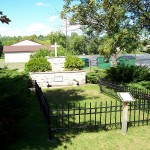 miles and miles of land, and with it towns and homes. If that can happen these days, I can only imagine how easily it could have happened then. Many people have called the Great Peshtigo Fire, the forgotten fire, but in recent years America’s “forgotten fire” has proven to be anything but. The tragedy is a subject of inquiry and debate among meteorologists, astronomers and conservationists. It has been dramatized by novelists and playwrights. It continues to fascinate history buffs and frustrate genealogists, which is where I come in. While the list of the dead from the Great Peshtigo Fire, does not include names I know to belong to my family, the idea of a thousand people unaccounted for in any way, makes me wonder if some of the Wisconsin connections I have been unable to make could be among the lost ones of the Great Peshtigo Fire.
miles and miles of land, and with it towns and homes. If that can happen these days, I can only imagine how easily it could have happened then. Many people have called the Great Peshtigo Fire, the forgotten fire, but in recent years America’s “forgotten fire” has proven to be anything but. The tragedy is a subject of inquiry and debate among meteorologists, astronomers and conservationists. It has been dramatized by novelists and playwrights. It continues to fascinate history buffs and frustrate genealogists, which is where I come in. While the list of the dead from the Great Peshtigo Fire, does not include names I know to belong to my family, the idea of a thousand people unaccounted for in any way, makes me wonder if some of the Wisconsin connections I have been unable to make could be among the lost ones of the Great Peshtigo Fire.
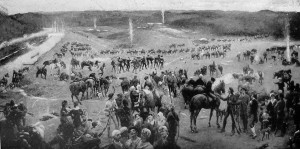 October 7, 1780, was the beginning of the end of British rule in The Colonies. The Battle of King’s Mountain would be a battle that the British would never forget. Fewer than one thousand American Heroes, used skills and strategies that no one expected them to have to defeat Major Patrick Ferguson, who was the star of the British military might. Benjamin, James, Robert, and Samuel Knox, ancestors of my husband, Bob Schulenberg, were four of those heroes. The Knox brothers walked away from the battle without being wounded. In reality so did most of the 900 Patriots who participated in the battle. In the end, while the number of casualties reported varies from source to source, some of the most commonly reported figures are that 225 Loyalists had been killed, 163 wounded and 716 were captured, while only 28 Patriots were killed, including Colonel James Williams, and 68 wounded. The outcome of this battle was disastrous for the British, and especially for Major Patrick Ferguson, who died there.
October 7, 1780, was the beginning of the end of British rule in The Colonies. The Battle of King’s Mountain would be a battle that the British would never forget. Fewer than one thousand American Heroes, used skills and strategies that no one expected them to have to defeat Major Patrick Ferguson, who was the star of the British military might. Benjamin, James, Robert, and Samuel Knox, ancestors of my husband, Bob Schulenberg, were four of those heroes. The Knox brothers walked away from the battle without being wounded. In reality so did most of the 900 Patriots who participated in the battle. In the end, while the number of casualties reported varies from source to source, some of the most commonly reported figures are that 225 Loyalists had been killed, 163 wounded and 716 were captured, while only 28 Patriots were killed, including Colonel James Williams, and 68 wounded. The outcome of this battle was disastrous for the British, and especially for Major Patrick Ferguson, who died there.
Major Patrick Ferguson came to North Carolina in September 1780, and with the plan of recruiting troops to join the Loyalist militia to protect the flank of Lord Cornwallis’ main force. Ferguson issued a ultimatum to the rebel militias to lay down their arms or suffer the consequences. Apparently, he didn’t understand the Patriots at all…not an unusual mistake for the enemies of the United States, even today. That ultimatum led them to react alright, but not in the way Ferguson had expected. The Patriot militia led by Benjamin Cleveland, James Johnston, William Campbell, John Sevier, Joseph McDowell and Isaac Shelby rallied for an attack on Ferguson. Major Ferguson, realizing the seriousness of his error, attempted to retreat to the safety of Lord Cornwallis’ army, but never made it.
The battle took place 9 miles south of the present day town of Kings Mountain, North Carolina in rural Cherokee County, South Carolina. Because the arrival of the Patriots was almost a complete surprise, the Loyalists suffered heavy casualties. The battle lasted just one hour, after which Major Patrick Ferguson lay dead, and his men, either dead, wounded, and/or captured, but not a single one of Fergusons men had escaped. The Patriots did have to retreat quickly, so they would not be there in the event of a counterattack from Lord Cornwallis’ army, but they left Kings Mountain completely victorious. It was the beginning of the end for British rule in the United States. No longer would The Colonies be looked at as simply fledglings in need of guidance, nor would they be looked at as a small insignificant army, but rather they would be respected as a worthy opponent.
Historians agree that the Battle of Kings Mountain was the “beginning of the end” of British rule in its former colonies. In less than one hour of battle, The Overmountain Men, as they were called, not only won the day, but also undermined the British strategy for keeping America under its control. Such a defeat, as that suffered by Major Patrick Ferguson, is rare in any war. Ferguson thought that his position on Kings Mountain was one that would make an attack nearly impossible, without advance warning. The plateau of the mountain was just large enough to serve as a battleground for his command and to provide space for his camp and wagon train. There was water nearby. The slopes of the mountain would hinder the advance of the attackers. When attacked he expected that any retreat would be rendered impossible by flanking or encircling detachments, a condition he desired, because he would see to it that his men stood and fought, rather than run away. From Patrick Ferguson’s point of view, there was no better position than the one he had found. How very wrong he was.
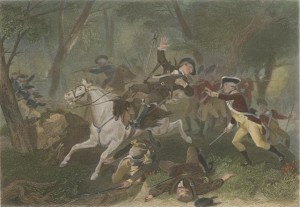
The Knox family went on to play an illustrious and important role in American history. They were descendants of Charlemagne and the British House of Plantagenet, established by Henry II and Eleanor of Acquitaine, whose exploits were told in the movie, The Lion in Winter. They were of the same family as Richard, the Lionhearted, King John who was forced to sign the Magna Carta, and John Knox, the famous Scottish reformer, who railed against the reign of Mary, Queen of Scots. This family produced the man who would become the eleventh President of the United States of America: James Knox Polk. They were a family that my husband’s family has long been proud to be a part of.
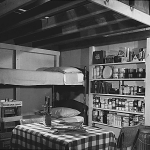 From the end of World War II, until the mid 1990s, the world was in the middle of the Cold War. The Soviet Union had developed atomic weapons, and they were threatening to use them. Tensions were high, because they were flexing all the military muscle they could. A common part of the administration was make sure that the people of the United States were ready for the very real possibility of an attack. The Eisenhower administration formed the Federal Civil Defense Administration (FCDA), later called the Office of Civil Defense, to instruct the people on what to do in the event of a nuclear attack.
From the end of World War II, until the mid 1990s, the world was in the middle of the Cold War. The Soviet Union had developed atomic weapons, and they were threatening to use them. Tensions were high, because they were flexing all the military muscle they could. A common part of the administration was make sure that the people of the United States were ready for the very real possibility of an attack. The Eisenhower administration formed the Federal Civil Defense Administration (FCDA), later called the Office of Civil Defense, to instruct the people on what to do in the event of a nuclear attack.
On this day, October 6, 1961, President Kennedy urged the people of the United States to build bomb shelters, so they could live through the nuclear fallout in the event of an attack. I was a girl of just five years, in 1961, but I vividly remember seeing those fallout shelters and knowing that it was possible that the day could come when we might have to take shelter there. That is pretty scary stuff for a five year old girl, but it was simply the world we lived in.
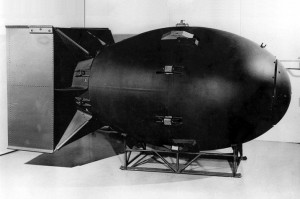 When I fast forward to this day and age, I have to wonder why some of the same precautions aren’t being put in place by this administration. We all know that Iran has nuclear weapons, and Russia, along with China, are beefing up their forces too. In many ways, the Cold War is in full force again, and no one seems to be reacting to the dangers. Maybe it is because we are getting used to the threat of nuclear war, but it still seems odd to me that there is not more preparation. Even I must admit that as a child, the fallout shelters were a source of unease for me, but now…even with the threat of nuclear war constantly in the news, I just don’t feel the same kind of concern…though maybe I should.
When I fast forward to this day and age, I have to wonder why some of the same precautions aren’t being put in place by this administration. We all know that Iran has nuclear weapons, and Russia, along with China, are beefing up their forces too. In many ways, the Cold War is in full force again, and no one seems to be reacting to the dangers. Maybe it is because we are getting used to the threat of nuclear war, but it still seems odd to me that there is not more preparation. Even I must admit that as a child, the fallout shelters were a source of unease for me, but now…even with the threat of nuclear war constantly in the news, I just don’t feel the same kind of concern…though maybe I should.
A fallout shelter was intended to reduce casualties in a nuclear war. It is designed to allow those inside it to avoid exposure to harmful fallout from a nuclear blast and its likely aftermath of radiation until radioactivity has dropped to a safer level. A basic fallout shelter consists of shielding that reduces gamma ray exposure. The most dangerous fallout has the consistency of sand or finely ground pumice, so a fallout shelter would not need to filter fine dust from air. The fine dust emits relatively little radiation. Concrete, bricks, earth, and sand are 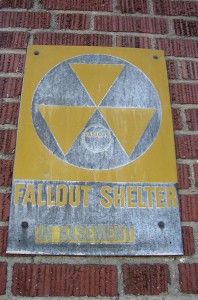 some of the materials that are dense or heavy enough to provide fallout protection. Basically this shelter could be much like a tornado shelter, except that it would need to have a door that seals completely.
some of the materials that are dense or heavy enough to provide fallout protection. Basically this shelter could be much like a tornado shelter, except that it would need to have a door that seals completely.
Concrete was the most often used building material of fallout shelters, with walls at least 12 inches thick. The required shielding could be accomplished with 10 times the amount of any quantity of material capable of cutting gamma ray effects in half. Shields that reduce gamma ray intensity by 50 percent include 0.4 inches of lead, 2.4 inches of concrete, 3.6 inches of packed dirt or 500 feet of air. I suppose the main concern for most of us the difficulty building one of these shelters, Nevertheless, that is exactly what President Kennedy urged the people to do, and what many of them did do. It was terrifying stuff, and it makes you wonder what is wrong with people who would even consider detonating one of these nuclear bombs.
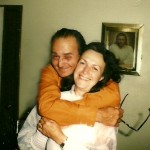 Our family always loved having our Aunt Ruth Spencer Wolfe, her husband, Uncle Jim Wolfe and their kids, Shirley, Larry, and Terry come to visit. We always had so much fun when they came. It didn’t matter if we were playing with the kids or sitting around listening to the many stories Uncle Jim or Aunt Ruth told. There was always so many fun things going on when they were there. My dad, Allen Spencer and Uncle Jim kept us all laughing with their antics. Dad and Uncle Jim were always coming up with some new thing…from wild recipes to crazy challenges. There was never a dull moment when our two families were together.
Our family always loved having our Aunt Ruth Spencer Wolfe, her husband, Uncle Jim Wolfe and their kids, Shirley, Larry, and Terry come to visit. We always had so much fun when they came. It didn’t matter if we were playing with the kids or sitting around listening to the many stories Uncle Jim or Aunt Ruth told. There was always so many fun things going on when they were there. My dad, Allen Spencer and Uncle Jim kept us all laughing with their antics. Dad and Uncle Jim were always coming up with some new thing…from wild recipes to crazy challenges. There was never a dull moment when our two families were together.
When we were kids, the two families took trips together. A favorite was the South Dakota trip. Our parents were great campers, and they always made it a lot of fun. I also remember several trips to Casper mountain. The mountain was a long standing favorite, because it was close and yet we got to 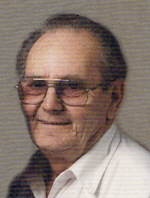 get out and camp, or at the very least, go for picnics. For a number of years, however, their family lived here in Casper, and that made it much easier to get together.
get out and camp, or at the very least, go for picnics. For a number of years, however, their family lived here in Casper, and that made it much easier to get together.
I gave us kids lots of time to play together. They had chickens, ducks, and geese, and for my sisters and me, all city girls, that in itself was a novelty. Of course, we didn’t have to clean up after them either. I think we were pretty prissy, and we would have probably freaked out at the site of the coop. They also had a garden, and in it was just about everything you could imagine, so I’m sure Aunt Ruth and Uncle Jim found a few things missing from the garden after we all spent time outside at their house. They also had a tractor that Shirley would hook the wagons up to and take us all for rides. It was a great time. Of course all too often, it was more fun to be inside with them. Our dad’s kept things lively, whether they were together or all by themselves.
For Uncle Jim’s kids, he was a role model. He taught them how to shoot a gun, and go hunting, so they could provide meat for their families. Their training started as young as two years old, and that is something I agree with. If children know what a gun can do, and they are taught the value of life, they will gain a healthy respect for both life and gun. Shirley recalls fishing, hunting and camping with her dad, and with that came a great 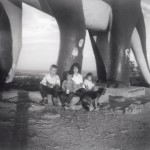 sense of camaraderie between the two of them. He was her hero, and she knew that he could do anything. I suppose that is part of what made it hard for her when his mind started to go. Suddenly the dad, who had always taken such good care of her and the family, needed her to take care of him. I know how she feels about that. It is a hard thing to know that your parents are aging, and all you can think is, “How can I stop this? I want to go back in time!!” Unfortunately, that can never be. We live the life we have been given, in the time we were meant to live in, and when it is time to go home to heaven, we must go, whether our family is ready or not. Today would have been Uncle Jim Wolfe’s 94th birthday. He left us almost 3 years ago, and we’ll always miss him. Happy birthday in Heaven, Uncle Jim. We love you.
sense of camaraderie between the two of them. He was her hero, and she knew that he could do anything. I suppose that is part of what made it hard for her when his mind started to go. Suddenly the dad, who had always taken such good care of her and the family, needed her to take care of him. I know how she feels about that. It is a hard thing to know that your parents are aging, and all you can think is, “How can I stop this? I want to go back in time!!” Unfortunately, that can never be. We live the life we have been given, in the time we were meant to live in, and when it is time to go home to heaven, we must go, whether our family is ready or not. Today would have been Uncle Jim Wolfe’s 94th birthday. He left us almost 3 years ago, and we’ll always miss him. Happy birthday in Heaven, Uncle Jim. We love you.
 I have always loved cats. I like dogs too, but for the most part, I like cats better. I love to watch them play, and love it when they want to cuddle and purr. Maybe it’s because we had some cats when I was very young, but then we had the one dog I can say I truly loved too, King. For the most part, dogs annoy me a little bit, I guess. They are always sniffing and licking you. Cats, on the other hand, might lick you once in a while, if you have something tasty on your hand, but for the most part, they want you to be their slave. You are to pet them, or they will stick their head under your hand so that you are reminded of your job. They are unashamed concerning their plan too. If you have the nerve to leave them alone for longer than they think you should, then you will be subjected to the cold shoulder. How long depends on how quickly you begin to make amends, but know this, they plan to hold out a while.
I have always loved cats. I like dogs too, but for the most part, I like cats better. I love to watch them play, and love it when they want to cuddle and purr. Maybe it’s because we had some cats when I was very young, but then we had the one dog I can say I truly loved too, King. For the most part, dogs annoy me a little bit, I guess. They are always sniffing and licking you. Cats, on the other hand, might lick you once in a while, if you have something tasty on your hand, but for the most part, they want you to be their slave. You are to pet them, or they will stick their head under your hand so that you are reminded of your job. They are unashamed concerning their plan too. If you have the nerve to leave them alone for longer than they think you should, then you will be subjected to the cold shoulder. How long depends on how quickly you begin to make amends, but know this, they plan to hold out a while.
Most cats feel like their owner is not really their owner, in fact, cats are sure they are the owner. I know that’s 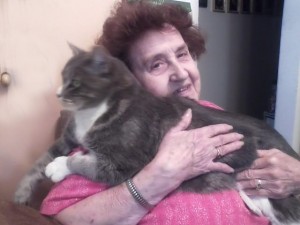 how both of my mom’s cats felt about her. Every time we took Mom out of town, they would practically ignore her upon her return. Nevertheless, whenever Mom needed them to be there…they were, whether her little knights in shining armor could do anything to help her or not. They were able to stay right there beside her, with a look of concern, until help arrived. Even though the cats couldn’t do anything for her, her loyal cats stayed by her side, because whether she was the owner or the cat was the owner, her cats loved her very much. I know that dogs have been known to do the same things, but I just found it so sweet that her cats tried so hard to be her super hero.
how both of my mom’s cats felt about her. Every time we took Mom out of town, they would practically ignore her upon her return. Nevertheless, whenever Mom needed them to be there…they were, whether her little knights in shining armor could do anything to help her or not. They were able to stay right there beside her, with a look of concern, until help arrived. Even though the cats couldn’t do anything for her, her loyal cats stayed by her side, because whether she was the owner or the cat was the owner, her cats loved her very much. I know that dogs have been known to do the same things, but I just found it so sweet that her cats tried so hard to be her super hero.
Maybe that is the reason why I love cats so much. Their cuddly, purring ways, and their need to be with their human, even if it is just to make their human pet them, That may be a bit selfish on the cat’s part, but it is loving too. Cats have, not only the ability crave love, but they are also capable of giving love. The cats my girls had when they were little put up with so much. Our daughters, Corrie Petersen and Amy Royce, were little and 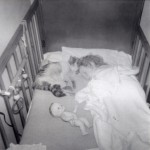 rough, but the cats never scratched them intentionally, because they loved them. All they wanted was to be near the girls.
rough, but the cats never scratched them intentionally, because they loved them. All they wanted was to be near the girls.
That’s how one of our cats was with me, when I was a little girl. I know that I was probably not a perfect human for our cats, but it didn’t matter. The cat wanted to be with me. It didn’t matter what I was doing, the cat adapted. And I’m quite certain that I felt the exact same as the cat did. I’m not sure how often my cat slept in my crib, but my guess is that it was more than once. It was such a sweet gesture. I expect that it happened often, because, my parents thought it was sweet enough to capture on film. And…I am glad they did.
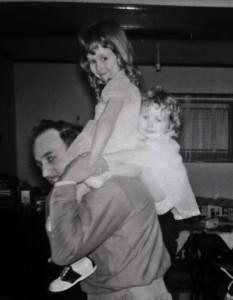 As small children, most of us have no fear of things…at least not in the early years, before bedtime monsters tend to show up. We instinctively know that our parents will take care of us. Of course, part of it is that we don’t understand the possible dangers around us, and part of it…a major part is because, we simply trust that our parents are well able to keep us safe. It is a matter of trust. Things like going into a pool or lake with our parents seemed like no big deal, although if we had known, we would have realized that they were watching us like a hawk, making sure that we stayed safe. Most of us don’t really fully understand that until we have our own kids.
As small children, most of us have no fear of things…at least not in the early years, before bedtime monsters tend to show up. We instinctively know that our parents will take care of us. Of course, part of it is that we don’t understand the possible dangers around us, and part of it…a major part is because, we simply trust that our parents are well able to keep us safe. It is a matter of trust. Things like going into a pool or lake with our parents seemed like no big deal, although if we had known, we would have realized that they were watching us like a hawk, making sure that we stayed safe. Most of us don’t really fully understand that until we have our own kids.
Like my sister, Cheryl Masterson and me, most kids think their dad can do anything. If you will notice, even though I am in back of Cheryl, and much lower on Dad’s back, my face shows no fear. I knew that my daddy would not let me fall. Somehow in his big strong hands, he had a hold on Cheryl’s hands, as well as my hands and feet. I was not afraid. In fact, I was smiling, as was Cheryl. We always knew that we could trust our dad to be there for us…not just as children, but all through our lives…for as long as he lived, we knew that he would do whatever it took to take care of us and to keep us safe. What a wonderful feeling that is. Trust…that is what it’s all about.
I think that for most kids, their dad is their first super hero figure. Like Superman or Batman, we think that they will always rush to the rescue, and they always will do their very best to be there. None of us wants to accept the fact that there might come a day when our parents can’t be there for us, whether it is because they life far away, or they live in Heaven. Most of us hope that day never comes, but if it must, then we hope we are grown adults, because we don’t want to live without them ever, but especially not as kids. Nevertheless, 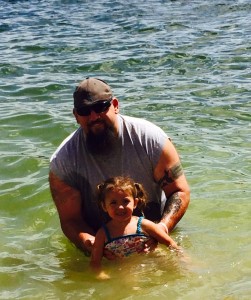 someday that day will come, and then we have to hope that the lessons we learned from our super hero parents will carry us through the changes in our own lives.
someday that day will come, and then we have to hope that the lessons we learned from our super hero parents will carry us through the changes in our own lives.
By then many of us have our own children or even grandchildren, and we have spent a number of years being the super hero for them. It is just a part of the journey we all take through this life. What we learn from our parents, we pass on to our kids, who pass it on to their kids. We can only hope that the lessons we pass along are of great value, and that we are worthy of the trust that our little ones place in us. I think that most of us are the kind of parent who deserves to be looked up to. I know that my own parents certainly were, and as I think of them, I feel a sense of pride and yes, still trust. I trust the lessons they taught me to shape me to be the kind of person they knew I should be. I have tried to train my children to be the kind of people my parents were…and the kind of person I am trying to be. It’s a matter of trust.
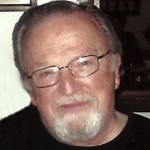 I’ve been spending some very enjoyable time emailing with my cousin, Dennis Fredrick lately, and the subject of Great Aunt Bertha Schumacher Hallgren’s journal came up again. That is all it takes for me to decide that I need to read it again. I can’t get over the draw that journal has on me. Every time I read it again, something more jumps out at me. Another little tidbit of her amazing personality, because you see, my Great Aunt Bertha was an amazing person. She had the ability to see things around her in a deeper and sometimes, different way than others. Her curious mind wondered about the events taking place, and their impact on the future. And she had a foresight that many people just don’t have. I love her vision.
I’ve been spending some very enjoyable time emailing with my cousin, Dennis Fredrick lately, and the subject of Great Aunt Bertha Schumacher Hallgren’s journal came up again. That is all it takes for me to decide that I need to read it again. I can’t get over the draw that journal has on me. Every time I read it again, something more jumps out at me. Another little tidbit of her amazing personality, because you see, my Great Aunt Bertha was an amazing person. She had the ability to see things around her in a deeper and sometimes, different way than others. Her curious mind wondered about the events taking place, and their impact on the future. And she had a foresight that many people just don’t have. I love her vision.
I didn’t get very far…the first page, in fact…before something new jumped out. She was talking about the dislike many people have of history, and how few want to write about it, except when it comes to family history. I think that is probably because they feel somehow connected to the events of the past, when they think about the fact that their ancestors lived those events. She talked about the idea of people writing about family histories taking off, and becoming a vast project that connected many people. She mentioned that, if writing about family history ever became popular to a wide scale, future generations could read about them centuries from now. Sometimes, I wonder what she would think of her idea of family history studies on a wide scale, because that is exactly what we have these days. Maybe, she could see a bit into the future, and in her mind envision events that were going to come about, much like Jules Verne did with some of his writings.
She encourages people to add to with family history, the human side, because without it, the history becomes dry reading of statistics with no heart to it. Great Aunt Bertha felt that we were living in amazing times at the time of her journal, and while many people would think she meant the 1800s, she did not. She was talking about 1980. I lived through the 1980s, and I can’t say that I ever felt like they were anything so special, but 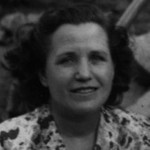 looking back now, I think about the man that many of us consider to be the greatest president we have ever had, Ronald Reagan. Those were days of recovery from the tense days of the 1970s and the big government we had then. They were days when taxes were cut, and government was limited, and things began to get better. The Cold War was winding down, and we saw the Berlin Wall come down at Reagan’s insistence. Thinking back I can see that Great Aunt Bertha was right. The 1980s were amazing days, but then so are many other times in our nation’s history. We just have to look at those days and realize that each generation has its greatness. That was the kind of thing my great aunt saw, but as I said, she saw deeper into a situation than most people saw, and she also saw the value of the insight she found by looking deeper.
looking back now, I think about the man that many of us consider to be the greatest president we have ever had, Ronald Reagan. Those were days of recovery from the tense days of the 1970s and the big government we had then. They were days when taxes were cut, and government was limited, and things began to get better. The Cold War was winding down, and we saw the Berlin Wall come down at Reagan’s insistence. Thinking back I can see that Great Aunt Bertha was right. The 1980s were amazing days, but then so are many other times in our nation’s history. We just have to look at those days and realize that each generation has its greatness. That was the kind of thing my great aunt saw, but as I said, she saw deeper into a situation than most people saw, and she also saw the value of the insight she found by looking deeper.
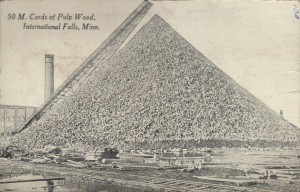
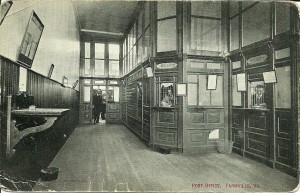 My sister, Cheryl Masterson has collected post cards for a long time. For some people, I suppose that might see an odd thing to collect, but when you think about it, they are easy to store and to look back on, and they instantly give you a picture of the place you are visiting, and usually it is a better picture that you could take yourself. Of course, these days, with digital cameras, we can take pretty good pictures, but it isn’t easy to print and mail them. Then again, we have to ability to upload them to Facebook, Twitter, and email, so most of us probably wouldn’t mail them anyway. Nevertheless, just about every gift shop you come across has post cards, and they seem to sell pretty quickly.
My sister, Cheryl Masterson has collected post cards for a long time. For some people, I suppose that might see an odd thing to collect, but when you think about it, they are easy to store and to look back on, and they instantly give you a picture of the place you are visiting, and usually it is a better picture that you could take yourself. Of course, these days, with digital cameras, we can take pretty good pictures, but it isn’t easy to print and mail them. Then again, we have to ability to upload them to Facebook, Twitter, and email, so most of us probably wouldn’t mail them anyway. Nevertheless, just about every gift shop you come across has post cards, and they seem to sell pretty quickly.
Post cards first made their appearance in Austria on this day, October 1, 1869. They were the world’s first postcards, and I’m sure that no one would have ever guessed what an impact they would have on the world. They weren’t something to improve national security, or improve the quality of life, or really to do anything special, other than to allow the purchaser to send a quick note to their family back home to show them what they were doing on their vacation. Nevertheless, they were new and fun.
As I look through old family pictures from my family and from Bob’s, I have come across a number of postcards that were sent or received, that the family found interesting enough to save for all these years. I always wondered why they would want to save those post cards and even put them in photo albums, but when you consider that they were still relatively new at the time, I guess it makes sense.
I feel very blessed to have not only the post cards now, but the writing that was on the ones that were sent to someone. It gives you not only a feel for the times, but also for what they were doing at the time. Our families clear back to the 1800s lived in a time when people were moving around a lot, both to move and to vacation…not unlike today, I guess. We are a people who loves to see the things our world has to offer, and then we like to have a little souvenier of our time spent there. I know that when Bob and I traveled to Seattle, Washington, I came back with tons of pictures, and several souveniers. It is just the way we do things.
I think that whoever came up with idea to start taking some of the great pictures people took and putting them 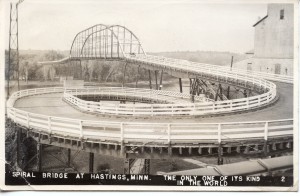
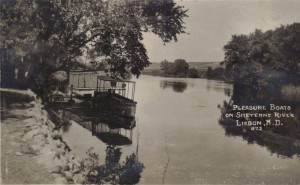 on a card that other people could enjoy and send to family, really had a great idea. And it is my guess that they made a lot of money for their great idea. For my sister Cheryl, they have been a great source of joy. She can have all the great pictures, even if she is not able to get to the exact same place to take them. For me, I guess, I would rather go get the pictures myself, but not everybody can do that, so post cards are a great souvenier to have.
on a card that other people could enjoy and send to family, really had a great idea. And it is my guess that they made a lot of money for their great idea. For my sister Cheryl, they have been a great source of joy. She can have all the great pictures, even if she is not able to get to the exact same place to take them. For me, I guess, I would rather go get the pictures myself, but not everybody can do that, so post cards are a great souvenier to have.
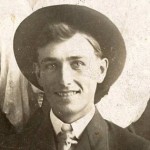 For some time now, I have not really had a lot of information on my grandmother, Anna Schumacher Spencer’s brother, Albert Schumacher. My Aunt Bertha Schumacher Hallgren, their younger sister wrote a few things in her journal, and I have connected with one of his great grandchildren, but she doesn’t have much information on him either. There were a few pictures of him in my Uncle Bill Spencer’s family history, as well as my grandmothers photo album and my dad’s photo album, but unfortunately for those of us left behind, there is not always good information about the pictures, except what my Uncle Bill was able to find out, because he documented pictures very well, if he had information on them. Uncle Bill started his family research long before computers, and since he really knew very little about computers, he never really furthered his research there. It was a fact that I found very sad, because I think he would have been so excited about what he would have been able to fine online.
For some time now, I have not really had a lot of information on my grandmother, Anna Schumacher Spencer’s brother, Albert Schumacher. My Aunt Bertha Schumacher Hallgren, their younger sister wrote a few things in her journal, and I have connected with one of his great grandchildren, but she doesn’t have much information on him either. There were a few pictures of him in my Uncle Bill Spencer’s family history, as well as my grandmothers photo album and my dad’s photo album, but unfortunately for those of us left behind, there is not always good information about the pictures, except what my Uncle Bill was able to find out, because he documented pictures very well, if he had information on them. Uncle Bill started his family research long before computers, and since he really knew very little about computers, he never really furthered his research there. It was a fact that I found very sad, because I think he would have been so excited about what he would have been able to fine online.
That said, I will tell you that the latest little tidbit of information, came not online, but rather through the hard work of Uncle Bill, and the pictures found in the albums of my dad and grandmother, that ended up being connected to what we knew from all of Uncle Bill’s hard work. It is completely amazing to me that it wasn’t all of the technology we have today that helped with the discovery to any large degree, but rather the old fashioned way of putting the history together that was so common to my Uncle Bill. I have looked at the pictures, I have been so blessed with, dozens and dozens of times, but somehow, at some point, something jumps out at me when I least expect it. One picture reveals to me a distinct similarity to another picture, and when I look at them side by side…well, there it is.
That is exactly what happened the other day when I was looking at pictures, and I noticed that the man in a 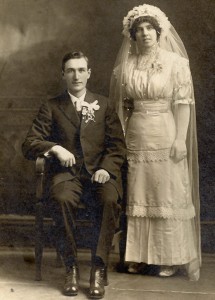 wedding photo I was looking at, looked very familiar. I knew I had seen that face before, and I knew exactly where I had seen it. In comparing the two pictures side by side, my revelation was confirmed. The picture I was looking at was a wedding picture, and the man and woman in the picture, were my Great Uncle Albert Schumacher, and his wife Christine Ida Froemke Schumacher. How could I have missed that? I had no other pictures of Christine, of course. so it couldn’t have been her that caught my eye. No, it was the man, and he was most definitely my great uncle Albert. When I put the two pictures side by side, it left no doubt in my mind, I had found my Great Uncle Albert’s wedding picture. That was so exciting to me that I sent my sister Cheryl Masterson a text at about midnight. Now thankfully she didn’t hear it, because we both had to work the next day. This is just what the excitement of my discovery caused me to do. I guess that once you get into the family history, it can be very addictive. I think maybe I’m my Uncle Bill’s niece in that way too. I can’t say that I’m surprised at all.
wedding photo I was looking at, looked very familiar. I knew I had seen that face before, and I knew exactly where I had seen it. In comparing the two pictures side by side, my revelation was confirmed. The picture I was looking at was a wedding picture, and the man and woman in the picture, were my Great Uncle Albert Schumacher, and his wife Christine Ida Froemke Schumacher. How could I have missed that? I had no other pictures of Christine, of course. so it couldn’t have been her that caught my eye. No, it was the man, and he was most definitely my great uncle Albert. When I put the two pictures side by side, it left no doubt in my mind, I had found my Great Uncle Albert’s wedding picture. That was so exciting to me that I sent my sister Cheryl Masterson a text at about midnight. Now thankfully she didn’t hear it, because we both had to work the next day. This is just what the excitement of my discovery caused me to do. I guess that once you get into the family history, it can be very addictive. I think maybe I’m my Uncle Bill’s niece in that way too. I can’t say that I’m surprised at all.
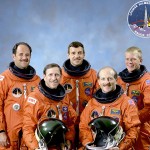 After a horrific accident such as Space Shuttle Challenger’s explosion 73 seconds after liftoff on January 28, 1986, taking with it seven astronauts, it is only prudent for NASA to have stopped all future flights until they knew the cause and had a fix in place. The Space Shuttle program was really NASA’s greatest achievement, and Challenger was its second shuttle into space. Challenger had a great record, having been sent into space nine times…before disaster struck on the tenth trip.
After a horrific accident such as Space Shuttle Challenger’s explosion 73 seconds after liftoff on January 28, 1986, taking with it seven astronauts, it is only prudent for NASA to have stopped all future flights until they knew the cause and had a fix in place. The Space Shuttle program was really NASA’s greatest achievement, and Challenger was its second shuttle into space. Challenger had a great record, having been sent into space nine times…before disaster struck on the tenth trip.
The Space Shuttle Challenger was first intended to be a test vehicle, Construction began in November of 1975. It was sent for testing on April 2, 1978, and after eleven months of vibration testing they decided to make it an actual vehicle. The first shuttle to be built into an actual workable unit was the Columbia, which ended up breaking up on February 1, 2003, to become the second time NASA lost lives in flight.
After Challenger blew up shortly after liftoff, NASA had to see what went wrong, and the space program was on hold for two years and eight months. Finally, after it was determined that an O-Ring failed due to weather that was too cold, a different NASA emerged. No longer would there be a rush to launch. Conditions would be right, or the launch would be scrubbed. It had to be that way. And yet we, as a nation, knew that America belonged in 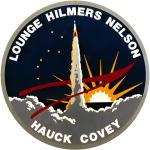 space. This was more that just a whim, but was rather an important contribution in many areas. The scientists who went into space performed experiments that led to many things we use today. Not to mention all of the information we have learned about our own little part of the universe. It was time to put America back in space.
space. This was more that just a whim, but was rather an important contribution in many areas. The scientists who went into space performed experiments that led to many things we use today. Not to mention all of the information we have learned about our own little part of the universe. It was time to put America back in space.
So, on this day, September 29, 1988, NASA launched STS-26. It was the return to flight mission, and it was a success. The mission lasted four days, one hour, and eleven seconds, and traveled 1,680,000 miles, making 64 orbits around the Earth. The Shuttle that made the return to flight mission was the Discovery. On board were Frederick H Hauck, Richard O Covey, John M Lounge, Davis C Hilmers, and George D Nelson. I’m sure there were moments of anxiety, especially at the moment when the command to Go with Throttle Up, the very command that led to the explosion of the Challenger, was given. Nevertheless, these men went, and made it through that anxious moment, to have a successful mission. It was the first mission since STS-9 to use the original STS numbering system, the first to have all its crew members wear pressure suits for launch and landing since STS-4, and the first mission with bailout capacity since STS-4. STS-26 was also the first all-veteran crew mission since Apollo 11, with all of its crew members having flown at least one prior mission. I’m sure there were specific reason for each of those things, but my guess is that it was mainly to have all the best  possible precautions in place.
possible precautions in place.
Besides conducting the mission’s various experiments, crew members practiced suiting up in new partial-pressure “launch-and-entry” flight suits, and also practiced the unstowing and attaching of the new crew escape system. On 2 October, the day before the mission ended, the five man crew paid tribute to the seven crew members lost in the Challenger disaster. Discovery landed on Runway 17 at Edwards Air Force Base, California, at 12:37 pm EDT on 3 October 1988, after a mission duration of four days, one hour and eleven seconds. Capsule Communicator Blaine Hammond Jr welcomed the crew, saying it was “a great ending to a new beginning.”

